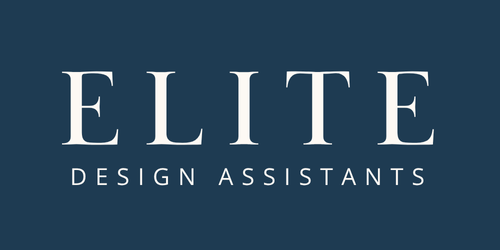Interior Design Scams No One Talks About
/Interior design can look so glamorous from the outside — all champagne reveals, glossy magazine spreads, and perfectly styled installs.
But anyone who's been in the business for more than five minutes knows there's a real underbelly most people don’t talk about.
There are real risks out there, from vendor fraud to nightmare client disputes to shady contracts, and if you don’t know what to watch for, you can lose a lot more than just your patience.
Today, we’re pulling back the curtain. This is the real talk that’s often missing from the conversation — not to scare you, but to empower you to protect your business, your creativity, and your peace of mind.
Let’s get into it:
1. Vendor Fraud (Yes, It Happens)
You work hard to build trusted vendor relationships. But sometimes vendors (or "vendors") aren't who they seem.
Common scams designers encounter:
Fake Product Samples: Some vendors show beautiful samples but deliver low-quality knockoffs once an order is placed.
Phantom Lead Times: Promising stock that doesn't exist — locking you (and your client) into a project timeline disaster.
Bait-and-Switch Pricing: After you present selections to a client, vendors suddenly "update" the pricing, forcing uncomfortable conversations (and sometimes costing you the sale).
How to protect yourself:
Always request full quotes (with product SKUs) in writing before presenting to a client.
Check references and online reviews — even if the vendor seems reputable.
Use purchase orders with clear specifications to protect yourself legally if substitutions are made without consent.
2. Shady Client Contracts (Or Worse — No Contract at All)
Not every client relationship ends with a hug and a five-star review.
Some clients will dispute invoices, demand endless revisions, or even ghost you mid-project. And without a proper contract? You’re left holding the bag.
Common scams designers encounter:
Scope Creep Sabotage: Clients pushing for extra work ("can you just add this one thing?") without paying for it.
Payment Games: Clients delaying or disputing payments, sometimes using vague language in poorly written agreements against you.
Chargeback Scams: Clients paying by credit card, then disputing the charge months after an install, leaving you fighting an uphill battle.
How to protect yourself:
Always, always use a professionally drafted service agreement that clearly outlines scope, deliverables, timelines, and payment terms.
Define exactly what is (and isn’t) included in your fee, and have a clear "additional services" clause with pricing.
Collect large deposits upfront and have milestone billing tied to project stages.
3. Intellectual Property Theft (Yes, Your Mood Boards Are at Risk)
You spend hours building a concept board for a potential client, only for them to ghost you... and use your exact ideas with someone else.
This happens way more than designers talk about.
Common scams designers encounter:
Mood Board Theft: Potential clients "shopping" your ideas to DIY or negotiate lower bids with other designers.
Portfolio Copycats: Other designers (or even vendors) lifting your project photos for their marketing materials without credit.
How to protect yourself:
Watermark preliminary presentations when pitching to prospects.
Use NDA (Non-Disclosure Agreement) language if you're sharing detailed proposals during consultations.
Trademark your brand name and logo to protect your public-facing work.
4. Product Markup Disputes (The Hidden Drama)
Designers often make part of their profit through trade discounts and product markups. But clients sometimes feel entitled to know your "real" costs, and things can turn ugly fast if expectations aren’t managed.
Common scams designers encounter:
Demanding Cost Transparency: Clients asking to see your invoices, suggesting you're "overcharging" — even though your markup covers time, sourcing, ordering, delivery management, and risk.
DIY Threats: Clients trying to bypass you and order directly from trade-only vendors using your selections.
How to protect yourself:
Clearly explain your procurement process (and markup policies) during onboarding, before sourcing begins.
Outline your purchasing fee structure in your contract.
Consider a hybrid fee model: separate sourcing fees + product procurement markups to make the value crystal clear.
5. Subcontractor Shenanigans (The Risk You Didn't Plan For)
You might recommend a trusted GC, installer, or upholsterer to your client... but if something goes wrong, guess who the client blames first?
You.
Common scams designers encounter:
Subcontractors Disappearing Mid-Project: Leaving you scrambling to find replacements — or deal with furious clients.
Unlicensed Work: Vendors taking shortcuts, leading to code violations or unsafe installations.
Side Hustling: Subcontractors pitching direct services to your client behind your back.
How to protect yourself:
Vet every subcontractor thoroughly — and confirm insurance, licensing, and references.
Use a subcontractor agreement (yes, even if you “trust them”) if you’re hiring directly.
Clarify in your contract that you are not liable for independent contractor work unless explicitly stated.
Final Thoughts
Running a successful interior design business isn’t just about taste and talent — it’s about protection. It’s about being smart, prepared, and understanding that the prettiest portfolio in the world won’t save you from the wrong vendor, client, or contractor if your business foundation isn’t rock solid.
Knowledge is your best defense.
By setting strong contracts, clear processes, and smart safeguards now, you’re protecting your creativity, your income, and your long-term success.
xx, Danae









